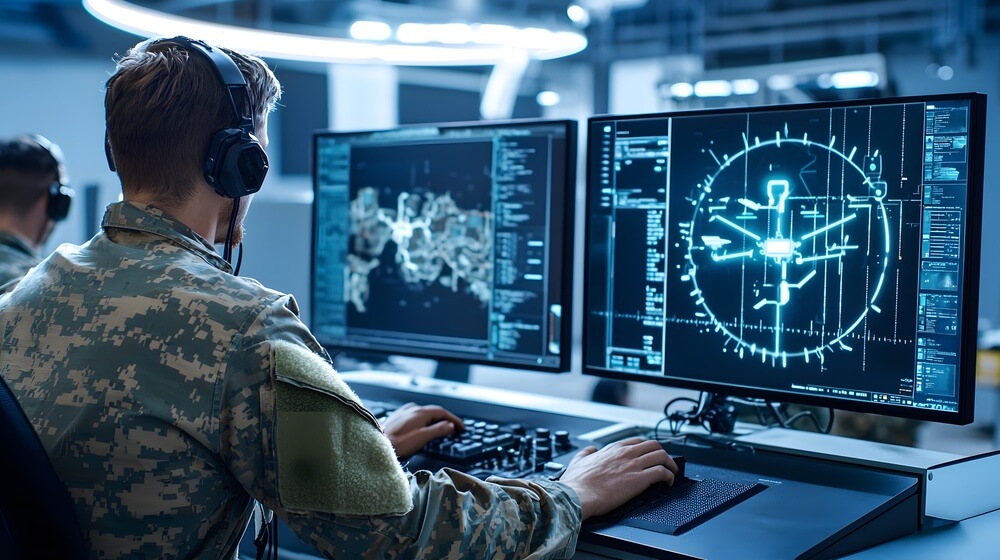Understanding the Threat of Rogue Drones
The rapid growth of drone technology has led to the emergence of rogue drones, increasing unauthorized activities and creating significant security threats. These rogue drones can be operated for illegal purposes such as espionage, smuggling, and even potential terrorist activities. To address these escalating threats, the development of anti-drone systems has been designed to detect, identify, and neutralize unauthorized drones before they can cause harm.
AI and machine learning are central to advanced anti-drone systems, improving the ability to distinguish between rogue and harmless drones by analyzing patterns and behaviors in real-time. Machine learning algorithms can continuously improve their accuracy over time, adapting to new threat vectors as they emerge. This technological synergy not only optimizes detection and response times but also reduces the likelihood of false positives, making sure that security measures are both successful and capable.
How AI improves detection and tracking
By using advanced pattern recognition techniques, AI algorithms can analyze vast amounts of real-time data to differentiate between authorized and unauthorized drones. These systems can rapidly adapt to various environmental factors, securing accurate drone identification even in complex and densely populated airspaces. Through continuous improvement, machine learning models refine their ability to predict and prevent potential threats by recognizing subtle deviations in drone behavior.
The development of anti-drone systems allows maintaining a heightened state of vigilance, guaranteeing that unauthorized drones are quickly detected and tracked. By integrating real-time data analysis, these AI-driven systems can respond to evolving threat landscapes with unprecedented speed and precision. The ability to identify rogue drones quickly and accurately reduces the risk of false alarms and improves overall security measures.
Machine Learning Algorithms in Threat Response
Machine learning algorithms excel in real-time analysis, enabling quick evaluation of situational data to determine the most productive course of action against rogue drones. By processing vast streams of data from sensors and cameras, they can discern patterns and anomalies that may indicate unauthorized drone activity. This ability to conduct real-time analysis allows anti-drone systems to identify potential threats with remarkable accuracy and speed. As these algorithms continuously learn from new data inputs, they refine their understanding of what constitutes normal and abnormal drone behavior.
In volatile airspace environments, machine learning algorithms prioritize responses based on the severity and immediacy of the threat, ensuring that high-risk intrusions are addressed quickly. This flexibility is important for minimizing potential security breaches and maintaining control over protected airspaces. Development of anti-drone systems can appropriately balance the need for rapid response with the precision of threat identification. As drone technology evolves, the integration of sophisticated machine learning algorithms will be paramount in maintaining secure airspace.
Advantages of integrating AI in anti-drone technology
One of the primary benefits of incorporating AI in these systems is the increased accuracy it provides in distinguishing between authorized and unauthorized drones. By utilizing advanced machine learning algorithms, AI-powered anti-drone systems can process real-time data with remarkable precision, which reduces the occurrence of false positives and streamlines security operations. AI’s capacity for continuous learning means that these systems improve over time, adapting to new types of drone behaviors and emerging threat patterns.
AI-driven anti-drone systems can analyze and respond to threats almost instantaneously, allowing security personnel to act quickly and decisively. This rapid response capability is important in preventing unauthorized drones from completing potentially malicious activities. Successful implementations of AI in anti-drone technology can be seen in various sectors, including government and commercial applications, where they have proven instrumental in safeguarding critical infrastructure and sensitive areas. As drone technology advances, AI integration will play an important role in strengthening defenses and ensuring better security for public and private interests.
Future Developments in Anti-Drone Systems
Emerging AI capabilities are expected to improve the detection, identification, and neutralization processes. Machine learning advancements will play a central part in facilitating these systems to predict and counteract new types of drone threats with greater precision. Future developments may include the integration of predictive analytics, allowing anti-drone systems to anticipate unauthorized drone activities before they occur. Innovative features for anti-drone systems include:
- Swarm Intelligence: AI-driven swarm technology that uses multiple drones to collaboratively detect and intercept rogue drones.
- Quantum Computing: Harnessing the power of quantum computing to process complex datasets at unprecedented speeds.
- Autonomous Decision-Making: Using machine learning algorithms to enable anti-drone systems to autonomously choose the best course of action without human intervention.
- Integration with IoT: Connecting anti-drone systems with Internet of Things (IoT) networks to provide real-time data sharing and enhanced situational awareness across multiple platforms.
- Advanced Behavioral Analysis: Enhancing machine learning models to conduct detailed behavioral analysis of drones, identifying new threat patterns and adapting to them quickly.
These future innovations will apply the full potential of AI and machine learning advancements, making sure that anti-drone systems remain pioneering. These systems will provide strong and dynamic defenses against the ever-growing threat of rogue drones, safeguarding both public and private sectors and preserving the integrity of our skies.


Recent Comments